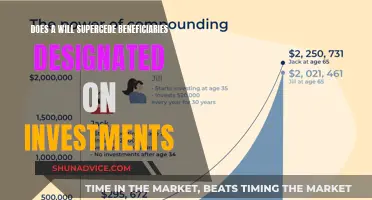
Note buying is a real estate investment strategy that involves purchasing debt and the security instrument attached to it. When an investor buys a note, they become the lender and collect payments from the borrower. Real estate notes are often sold at a discount and offer passive income, eliminating the need to manage a property or deal with tenants. Notes can be performing or non-performing, with the latter signalling that the borrower is in default. While investing in non-performing notes may seem counterintuitive, it can offer significant profits through reselling or foreclosing. However, this process is complex and time-consuming. Structured notes, which combine a bond with a derivative component, offer principal protection but are not risk-free. Investors should be aware of potential fees, illiquidity, and the possibility of losing their entire investment if the issuer goes bankrupt. Overall, note buying can be a lucrative opportunity for investors seeking passive income from real estate without the hassles of property management.
| Characteristics | Values |
|---|---|
| Definition | A note is a legal document that serves as an IOU from a borrower to a creditor or investor. |
| Similarities to Bonds | Investors receive interest payments and are repaid the original amount invested (principal) at a future date. |
| Differences from Bonds | Notes typically have an earlier maturity date than bonds. |
| Applications | Informal loan agreements, safe-haven investments, debt instruments issued by corporations, currency. |
| Types | Treasury notes, mortgage-backed notes, convertible notes, promissory notes, demand notes, etc. |
| Investment Strategy | Note investing is a real estate investment strategy where investors purchase debt and the attached security instrument, becoming lenders and collecting payments. |
| Performing vs. Non-Performing Notes | Performing notes are current on payments, while non-performing notes signal borrower default. |
| First vs. Second Position Notes | First position notes have priority claim on the property, while second position notes are subordinate to another loan. |
| Short-Term vs. Long-Term Notes | Short-term notes are for quick turnaround projects and carry higher risk and potential rewards. Long-term notes are for properties held longer and carry lower risk and rewards. |
| Pros | Passive income, high returns, security of tangible asset, no management headaches, opportunity to help others |
| Cons | Possibility of defaults, long-term commitment, interest rate risk, illiquidity. |
What You'll Learn

Real estate notes are a basic IOU secured by property
Real estate notes are a form of investment that allows individuals to invest in real estate without the typical drawbacks of being a landlord. When an individual buys a house, they usually take out a loan and make monthly payments. This loan is a real estate note. These notes are actively traded, and the lenders can sell them to other lenders.
A real estate note is a type of promissory note, which is a written promise by one party (the borrower) to pay another party (the lender) a definite sum of money, either on demand or at a specified future date. A promissory note typically contains all the terms involved, such as the principal debt amount, interest rate, maturity date, payment schedule, the date and place of issuance, and the issuer's signature.
A real estate note is a secured note, meaning it is backed by the borrower's assets as collateral. In this case, the collateral is the property being purchased with the loan. If the borrower defaults on the loan, the lender can seize and foreclose on the property.
Real estate notes can be an attractive investment for those seeking to get into the real estate market without dealing with the hassles of managing rental properties, maintenance issues, and tenant management. By investing in real estate notes, individuals can become the bank and enjoy the advantages of being a lender without the headaches of being a landlord.
There are two broad categories of residential real estate notes: performing notes and non-performing notes. Performing notes are those where the borrower is making their scheduled payments, while non-performing notes are those where the borrower is not making their scheduled payments. Investing in non-performing notes can be riskier but may offer higher returns.
Blackberry: Invest or Avoid?
You may want to see also

Notes can be purchased at a discount
Discounted notes are often sold by banks and other financial institutions when the borrower is not making their scheduled payments. These notes are sold at a discount, which can range from 50-90%. The goal for the investor is to then modify the loan with the homeowner, reach a lump-sum settlement, or foreclose on the property if necessary. While these investments can offer higher returns, they also carry more risk.
Another type of discounted note is a discount bond, which is a short-term debt obligation issued at a discount to par. These notes are similar to zero-coupon bonds and Treasury bills and are typically issued by government-sponsored agencies or highly-rated corporate borrowers. Discount bonds do not offer investors periodic interest payments. Instead, investors purchase them at a discounted price and receive the note's face value at maturity. The profit for the investor is the difference between the discounted purchase price and the face value redemption price.
Discounted notes can also refer to accounts receivable that have been converted into cash by selling them to a financial institution at a discount. The discount rate is the annual percentage rate that the financial institution charges for buying the note and collecting the debt. The discount period is the length of time between the note's sale and its due date. The discount itself is found by multiplying the note's maturity value by the discount rate and the discount period.
Retirement Savings: Why Opt-Out?
You may want to see also

Notes can be performing or non-performing
A performing note is one where the borrower is current on payments. Notes with a good payment history, a credible borrower, and good collateral are considered low-risk investments. Investors will often pay good money for them, sometimes up to 100% of their current balance. Performing notes are income tools, often purchased by investors who want dependable monthly income and a diversified portfolio.
A non-performing note is one where the borrower is in default. There are two stages to this: at 30 days overdue, a loan becomes sub-performing, and when payments are overdue by more than 90 days, the note becomes non-performing. Non-performing notes are seen as higher-risk investments and are often given a lower value. This is because the investor must deploy more capital to either get the borrower to start paying again or to foreclose. Non-performing notes are a more opportunistic investment. They are essentially valueless in their current condition but can be modified to re-perform, resold, or foreclosed to own or liquidate the real estate.
Both types of notes are useful for portfolio diversification and risk management. However, they carry different types and levels of risk and achieve different investment objectives.
Tata Motors: Invest Now or Miss the Bus?
You may want to see also

Notes can be first or second position
Notes are legal documents that represent a loan made from an issuer to a creditor or investor. They are similar to bonds, but with earlier maturity dates. Notes can be used as investment vehicles, with investors receiving interest payments for holding the note and being repaid the original amount invested (the principal) at a future date.
One type of note used for investment is the mortgage-backed note, which is an asset-backed security. For example, mortgage loans can be bundled into a fund and sold as an investment.
When investing in mortgage notes, there are two broad categories: performing notes and non-performing notes. Performing notes are where the borrower is making their scheduled payments, and the primary focus for investors is on current income. Non-performing notes are generally sold by banks and other financial institutions at a significant discount, and the goal for investors is to either modify the loan in conjunction with the homeowner, reach a lump-sum settlement, or foreclose on the property if necessary.
Within each of these categories, investors can focus on senior or junior lien positions. A lien is a legal claim against an asset that can be used as collateral to satisfy a debt. When investing in real estate notes, investors get a lien that collateralizes their investment. In other words, if a borrower stops paying their mortgage, the investor has the right to foreclose and take back the property.
Notes can be in first or second position. This refers to the priority of the lien. In first position, the investor's lien has priority over all other liens on the property. In second position, the investor's lien is secondary to another lien on the property. This means that if the borrower defaults on their loan, the first lien holder has the first claim on the property and will be repaid first from the proceeds of any sale or foreclosure. The second lien holder will only be repaid after the first lien holder has been fully repaid.
Being in first position is generally considered less risky than being in second position, as the first lien holder has priority over other creditors in the event of a default. However, this also means that first lien holders may have more flexibility in the event of a default, as they are in a stronger negotiating position. For example, they may be able to modify the loan terms or work out a payment plan with the borrower to avoid foreclosure.
Investing in notes offers the benefits of real estate investing without the headaches of being a landlord. When you invest in notes, you become the bank. You get all the advantages of being the lender, without the responsibilities of managing the property or dealing with tenants.
Diamond Investment: A Sparkling Guide to Buying Diamonds
You may want to see also

Notes can be short-term or long-term
Notes are documented IOUs, obligating the repayment of a loan, at a predetermined interest rate, within a defined time frame. Notes can be short-term or long-term, depending on the duration and the repayment period.
Short-term notes are generally used for funding short-term obligations, such as funding purchase orders, procuring raw materials, or other working capital needs. They are typically issued with a maturity period of less than a year and are disclosed under 'current liabilities' in a balance sheet. Short-term notes usually carry a lower interest rate than long-term notes, as they are less risky for the lender. They can be useful for small businesses to cover emergency expenses, finance purchases, or launch projects.
Long-term notes, on the other hand, are repayable over a longer period, usually more than a year. They are typically used for funding longer-duration obligations, such as purchasing capital goods or funding expansion plans. Long-term notes are disclosed under 'long-term liabilities' on the balance sheet. They may be preferred by borrowers in an environment of rising interest rates, as they can lock in a fixed interest rate for an extended period.
The interest calculation formula is the same for both short-term and long-term notes. However, for long-term notes, unpaid interest can be carried over from year to year and compounded. This means that the interest is added to the principal amount, and interest is calculated on the total sum for the next year.
In conclusion, notes can be short-term or long-term, depending on the repayment period and the obligations they are funding. Short-term notes are useful for short-term funding needs, while long-term notes are more suitable for longer-duration projects and may offer a way to lock in interest rates over an extended period.
Who Pays for Investment Advice?
You may want to see also
Frequently asked questions
A note is a legal document that serves as an IOU from a borrower to a creditor or investor. Notes have similar features to bonds, in which investors receive interest payments and are repaid the original amount invested, known as the principal, at a future date.
Note investing is when an investor purchases debt and the security instrument attached to the debt. If you invest in mortgage notes, you become the lender and collect payments from the borrower.
Note investing can be a lucrative and passive income opportunity. It also eliminates the need to pay real estate agents and offers the potential for a higher return on investment.
There is always the possibility of the borrower defaulting on the loan, which could result in losing your entire investment. Additionally, it can be difficult to measure potential profitability, and there may be issues with liquidity if you need to sell your investment before maturity.







